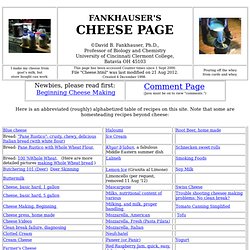

Why It’s Ethical to Eat Meat. Bradley Cramer taught Burmese refugees how to process the chickens he raised in Medina, Ohio, last Saturday at Schmidt Family Farms.

/Photo by Donna Turner Ruhlman Several weeks ago, New York Times columnist Ariel Kaminer created a contest asking people to argue that eating meat is an ethical decision. Kaminer was pleased by the response. Judges included carnivores, vegetarians, and perhaps the most thoughtful and compelling vegan living, Peter Singer (and it’s worth clicking the Kaminer link for the judges’ overall responses to the many essays they read). They chose as winner an article by teacher Jay Bost. It’s no secret that I am a vigorous and unapologetic carnivore.
This I believe: to eat humanely raised and slaughtered animals is not only ethical, it’s important to our humanity. To put it as simply as possible, then, to give up eating what made us who we are possibly endangers us genetically and socially. Michael, he said to me, I spend a lot of time with these animals. The Ethicist Contest Winner - Give Thanks for Meat. Fankhauser's Cheese Page. Here is an abbreviated (roughly) alphabetized table of recipes on this site.

Note that some are homesteading recipes beyond cheese: Links? News flash: Culinary Institute of America Kids website features Fankhauser's Neufchatel recipe here. Here is a new page for beginning cheese makers which lists a series of cheese making projects starting with the simplest to the more challenging. If you are new to cheese making, and wish to try this rewarding cottage craft, go to Beginning Cheese Making. I have been making cheese since the early 1970s when my wife, Jill and I began "homesteading" on a little farm in SW Ohio. Here are recipes for cheese and other fermented food products, and milk-related information pages, all alphabetical except for the first and newest additions. Alphabetical listing of Recipes and Topics. Links to other Cheesemaking sites, Discussion Groups, etc. Here are some links that I have participated in over the years.
Send Email to: Recipe: fermented salsa. You ask, I deliver.

Here you go, Matt! From Nourishing Traditions: SalsaMakes 1 qt -4 medium tomatoes, peeled, seeded and diced -2 small onions, chopped -3/4 c. chopped chile, jalapeno, or milder pepper (seeded) -6-8 cloves garlic, peeled and finely chopped or pressed -1 bunch cilantro -1 tsp. dried oregano (or a good T or two of fresh) -juice of 1-2 lemons -1 T. sea salt -4 T. whey or 1 extra T salt -1/4 c. filtered water For small scale recipes like this, it’s not really that big of a deal to just peel the tomatoes with a paring knife. If you do a search on how to peel tomatoes you’ll see a lot of advice about boiling water, and dipping the tomatoes first in the boiling water, then in the cold water. Anyway, mix all ingredients and place in a quart-sized, wide-mouth mason jar.
A note about timing: that “2 days” is a very subjective figure. How do you know when it’s done? If you use the no whey-extra salt method you’ll know it’s done when it starts to taste less salty.
Pickled Jalapenos. Nourished Kitchen — Reviving Traditional Foods. Fermenters Club. 6 DIY foods to make at home < 6 DIY gourmet foods.